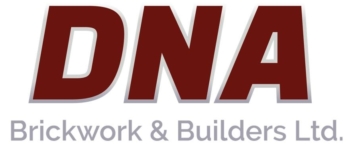When you look at the average UK house, you’ll notice that a huge number of them will share a boundary with another property. Depending on the type of house this boundary could be an ‘invisible ‘wall, or it could be a literal wall. This is known as a party wall, and it’s something that’s caused a lot of arguments between neighbours over the years! so today we wanted to explain the party wall Act and what it means for your home improvement.
The Party Wall Act
The Party Wall Act of 1966 is a piece of legislation that essentially acts as a way to prevent and resolve disputes between neighbours about party walls, structures, boundary walls and excavation close to neighbouring buildings. It’s only really applied to England and Wales, and it applies to all properties including government, Crown and local authority-owned buildings. All the act itself does is require you to file a notice to any adjoining neighbours that might be affected by works done to the party wall.
Types Of Party Walls
Believe it or not, there are two types of party walls according to the Party Wall Act. Type A and Type B.
Type A: Party walls that saddle the boundaries between two properties, and involve two different owners. This can be a stand-alone wall, or it can be a part of one of the neighbouring buildings. If the structure that is, along the boundary isn’t attached to either property, this is called a party fence wall. Although ironically a wooden fence or hedge doesn’t count as a party fence wall!
Type B: Party walls that stand solely within one owner’s boundary, but are used by both neighbours. On top of that is also the Party Structure, which is what the wall and floor partitions you find in flats are called.
How Does The Party Wall Act Affect Me?
Depending on the scope of the project, the party wall act could cause you a lot of inconveniences, or it could be completely irrelevant. It also depends on the relationship you have with your neighbours, as they will need to be actively involved in the matter. For example, if you’re looking to carry out works that will affect the party wall, we recommend you talk to your neighbours before serving them with party wall notice – something you will need to do as part of the process.
The Party Wall notice pack is a pack of documents explaining your intended works for the property, and what impact that will have on them. You have to serve the party wall notice at least 2 months before any works begin. Your neighbours then have 14 days to respond with either an agreement or a counter-notice with modifications that they would like done to benefit them. To be dear, they can’t prevent any work from being done, but they can make stipulations about how and when work is done.
When Is Notice Not Needed?
Of course, there are plenty of times that you don’t need to serve party wall Notice. Minor alterations, installing shelving, plug sockets or re-plastering the walls do not require notice, as these will have no impact on your neighbours at all. As long as the work you’re having done doesn’t affect the structural integrity of the wall, or cause any damage to your neighbour’s side of the wall, you’re in the clear.
If you’re not on good terms with your neighbours and need to serve them party wall notice, this could cause some problems. In fact, it’s one of the major causes of building disputes -just below whose responsibility maintaining fences is!
At DNA Brickwork we don’t just build walls. We also help manage your building works from start to finish, including party wall issues and notices. We can advise you on what your responsibilities are, and the steps you need to take to ensure your project goes smoothly. To find out more, or if you have any questions, just get in touch with the team today.




